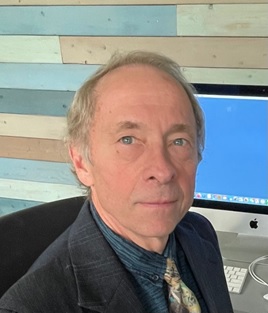
Title: Finding the sweet spot for your laser settings. Optimization is the key if you don't know your settings your guessing
Plenary Speaker
Joe Sarver
Laser R&D Scientist USA
Abstract
I’ve worked in laser bonding, laser marking, laser identification, and laser welding full time for the past 15 years and at least half of my 44 year career while a chemist with numerous patents in this field. Many of these materials are used by aerospace, military, and various applications in space. In order to have these materials bond properly, have the weathering ability and exhibit chemical resistance the window of bonding or marking may be unique for each application. This presentation will review some of the methods to help find these unique bonding and contrast areas. What we call the sweet spot.
Biography
Joseph Sarver has a BS in Chemistry from West Liberty University and a MS in Polymer Science from Carnegie Mellon University. He has worked in industry as a chemist & scientist at Bayer, Cerdec, Ciba Specialty Chemical, and Ferro. Twenty five years of his 43 years of experience is in the laser industry with fourteen patents and a patent pending using lasers and infrared reflecting technologies. He has taken products from discovery in the lab to production with a number of commercial products. Currently an Industry Consultant in the areas of organic pigments, inorganic pigments, and compounds for polymers, glass, metals for laser marking and other functional properties.

Title: The Emerging Promise of High-Powered Laser Photobiomodulation Therapy
Keynote Speaker
Dr. William Todd Penberthy
Personalized Health Research Services, LLC, Winter Park, Florida, USA
Abstract
Photobiomodulation therapy (PBMT) first gained widespread in the early 1970s with the 81% successful treatment (10mW; 660nm) of 1,018 otherwise non-healing leg ulcer patients. Today similar treatment modalities (commonly 10-500mW; 660nm) are covered by payers for the treatment of oral mucositis - a side effect occurring in 75-80% of patients with high dose chemotherapy. This simple inexpensive prophylactic red light treatmnt prevents pains with feeding tubes, saving 5,000-30,000$. Even more, non-healing diabetic foot ulcers (DFUs) respond to PBMT, and the 5-year mortality rate for DFUs is higher than breast cancer and prostate cancer combined! All the above are low-powered (<0.5W) technologies but these fail for many deep tissue pathologies (knee/spine arthropathies, brain disorders, more). Instead, high-powered (10 - 80W; often pulsed when at highest powers) lasers are needed. High powered lasers are recommended by medical associations (American Academy of Orthopedic Surgeons for knee osteoarthritis since 2021, more). Objective/Results – We performed a meta-analysis of controlled trials evaluating high-powered laser treatments (n=47). Statistically significant (p≤0.05) reductions in pain (37 out of 41 studies measuring pain) were observed using an average power of 9.1W (10 median, 1.6-12W range). Knee arthropathy outcomes were most reproducibly positive, while high powered transcranial PBMT are proven in case studies including dementias but remain unexplored in controlled trials. Conclusion – Still under-recognized, we are in the middle of a promising discovery phase of high-powered laser PBMT research and only beginning to characterize the wide range of indications responding favorably to this exceptionally safe and deliverable technology.
Biography
For the past 5 years ongoing W. “Todd” Penberthy has focused on high-powered (~5-80 watts; not ≤0.5W) laser photobiomodulation for deep-tissue pathologies/indications with Aspen Lasers (www.AspenLasers.com). Todd obtained his PhD in biochemistry from the University of Tennessee, Memphis, trained at Tufts New England Medical Center/UCLA, and served as faculty at the University of Cincinnati in drug discovery collaborations before focusing on niacin/NAD for restoration of gene function/good health (www.PHRS-USA.com; password=niacin). He has provided continuing medical education (www.CMESCRIBE.com) services for physician board certification/education and biomedical scientific research/writing services for the past 10 years ongoing.
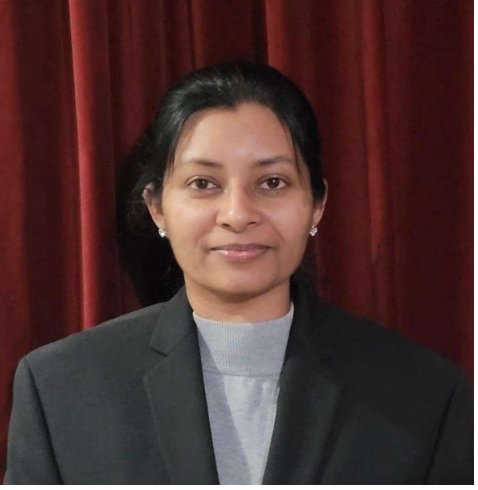
Title: Hybrid Machine Learning for Optimizing Elastic Optical Networks
Speaker
Subbulakshmi Easwaran
University of Texas USA
Abstract
Elastic optical networks (EONs) have a flexible architecture that allows the transmission of multiple data signals through optical fiber channels. EONs enable dynamic resource management by allocating an appropriate bandwidth for the optical fibers to carry out efficient data transmission.In order to facilitate the quality of the network,this paper provides the application of deep reinforcement learning (DRL) techniques in EONs for routing,modulation and spectrum assignment (RMSA).The agent of the DRL system is trained with suitable policy based algorithms to considerably reduce the blocking probability .The simulation results validate the better performance under varying traffic loads when evaluated with other works.The DRL-based EONs is studied by comparing the blocking probability with wide range of channels with that of Markov model and the efficacy of the system is further proved .One of the most crucial decisions in designing a network is optimizing the flow with less fault restoration ratio so as to have a reliable service to the end users by necessiting the minimal downtime.Our novel approach of using Kruskal algorithm in the presented framework mark a significant fault restoration ratio when compared to Prim’s algorithm involved in previous studies.Thus this new application of hybrid machine learning technique may have a greater advantage in delivering an efficient elastic optical networks.
Biography
Subbulakshmi Easwaran has completed her Masters from the Department of Electrical and Electronics Engineering , Anna University , India. She is currently pursuing her doctoral program from the University of Texas San Antonio,USA. Her research areas include communication networks,fiber optics and maching learning.
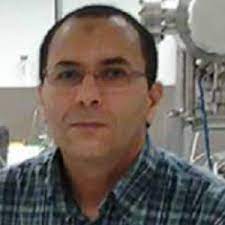
Title: Total Energy and Molar Volume as a New Approach to Confirm the Phase Transition; A Computation Study
Speaker
Chergui Yahia
Electrical & Electronic Engineering Institute Algeria
Abstract
Zinc oxide is stable under ambient conditions under the Wurtzite structure (B4), while Zinc blend (B2) and Rocksalt structures (B1) are metastables, The rocksalt type exists only at relatively high-pressure . The crystalline form of ZnO is utilized for ultraviolet light emitters, it has thermal stability. The amorphous form of ZnO is inspected for thermoelectric devices .We focus here on analysing the equiliruim time of total
energy and molar volume versus time to confirm the phase trasition as a new approache. Our system iscomposed from 5832 atoms of ZnO( the unit cell is formed from 8 atoms), the range of pressure is 0-200GPa and for temperature is 300-3000K. This new approach for confirmation of phase transition is compared with available results and the are in the vicinity of those data.
Biography
Yahia CHERGUI is an assistant Professor in Electrical & Electronics Engineering Institute, Boumerdes Algeria. He has completed his PhD from Badji Mokhtar University in Annaba, Algeria. He did all his PhD work in Cardiff University in UK. His research field is Physics(condensed matter, and soft matter simulation by molecular dynamics). He has many published articles and international conferences. He has been serving as a referee with condensed matter journal (IOP), Energy journal (Elsevier), and American Journal of Modern Physics
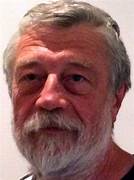
Title: Quantum-Classical Mechanics: Principles, Applications, and Prospects
Speaker
Vladimir V. Egorov
FSRC “Crystallography and Photonics”, RAS, Moscow, Russia
Abstract
In quantum mechanics, the theory of quantum transitions is grounded on the convergence of a series of time-dependent perturbation theory. In nuclear and atomic physics, this series converges because the dynamics of quantum transitions are absent by definition. In molecular and chemical physics, the dynamics of “quantum” transitions, being determined by the joint motion of a light electron (or electrons) and very heavy nuclei, are present by definition, and this series becomes singular. An exception is the dynamic problem for stationary states in the Born-Oppenheimer adiabatic approximation, when the electronic subsystem turns out to be “off” from the general dynamic process and therefore is not dynamically full-fledged: it only forms an electric potential in which the nuclei oscillate. Removing the aforementioned singularity can be accomplished in two ways. The first method was consisted of introducing an additional postulate in the form of the Franck-Condon principle into molecular quantum mechanics, in which the adiabatic approximation is used. The second method was proposed by the author and consisted of damping the singular dynamics of the joint motion of an electron and nuclei in the transient state of molecular “quantum” transitions by introducing chaos. This chaos arises only during molecular quantum transitions and is called dozy chaos. Dozy chaos leads to the continuity of the energy spectrum in the molecular transient state, which is a sign of classical mechanics. Meanwhile, the initial and final states of the molecule obey quantum mechanics in the adiabatic approximation. Molecular quantum mechanics, which takes into account the chaotic dynamics of the transient state of molecular “quantum” transitions, can be called quantum-classical mechanics (QCM). The efficacy of the damping for the aforementioned singularity is shown by different QCM applications, in particular, by applications of the so-called Egorov resonance to optical spectra in polymethine dyes and J-aggregates both for single-photon and two-photon processes, which, in particular, are rationalizing experimental studies in the field of bioimaging and photodynamic therapy. Prospects for further developments in QCM and their applications to problems of cancer and viral infections are discussed.
Biography
Prof Dr Vladimir Valentinovich Egorov has his expertise in theoretical molecular and chemical physics. Education: National Research Nuclear University MEPhI, Faculty of Theoretical and Experimental Physics (1966 – 1972), Moscow, USSR. He has completed his PhD from Theoretical Department of Institute of Chemical Physics, USSR Academy of Sciences (1981), and he has completed his Dr Phys&Math Sci degree from Institute of Physical Chemistry, Russian Academy of Sciences (2004). He is leading researcher at FSRC “Crystallography and Photonics”, Russian Academy of Sciences, Moscow, Russia. Prof Egorov is working on the development of a fundamentally new physical theory ‒ quantum-classical mechanics and its applications in physics, chemistry, biology and biomedicine.
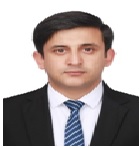
Title: High-speed visible light communication system based on white laser diode
Speaker
Dr. Amjad Ali Amjad
Zhejiang University China
Abstract
Gallium nitride (GaN) phosphor-converted white light-emitting diodes (Pc-WLEDs) are emerging as an indispensable solid-state lighting (SSL) source for next-generation display systems and the lighting industry. Together with the function of lighting, visible light communication (VLC) using Pc-WLEDs has gained increasing attention to fulfil the growing demand for wireless data communication. Over the past few years, white-light-emitting diodes have been used for both high-speed visible light communication and solid-state lighting simultaneously. Practically, the low modulation response and low emitting intensity of light-emitting diodes (LED) are the drawbacks to the development of ultrahigh-speed VLC and a high-quality SSL system. Blue GaN laser diode (LD) and color convertor quantum dots-based white light can simultaneously be used for both high-speed VLC and SSL.
Biography
Amjad Ali Amjad received the B.S. degree (Hons.) in computer systems engineering from the University of Engineering and Technology (UET), Peshawar, Pakistan, in 2014, the M.S. degree in electrical engineering from the University of Lahore, Islamabad, Pakistan, in 2017 and the PhD degree from Zhejiang University in 2021. Currently, he is a Postdoctoral Research Fellow at the school of electronic and computer engineering, Peking University. His research interests includewireless optical communications, underwater wireless optical communication, solid-state lighting and visible light communication. He has co-authored one book chapter and several papers on the above subjects in refereed journals and conference proceedings.
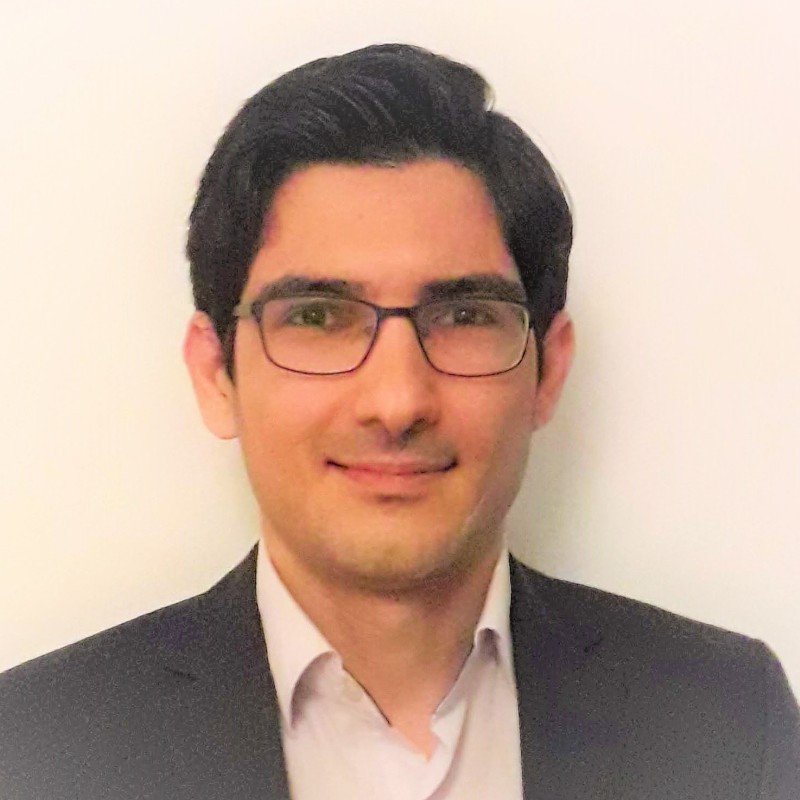
Title: Integrated Quantum Optics with Solid-State Emitters in Waveguides
Plenary Speaker
Hamidreza Siampour
Queen's University Belfast UK
Abstract
In this abstract, I highlight recent advancements in the field of integrated quantum optical devices and their potential for quantum sensing and networking. In the first part, I discuss the development of integrated quantum photonic circuits based on dielectric-loaded plasmonic waveguides with accurately positioned nanodiamonds containing single vacancy centers [1-4]. By combining resonant and plasmonic enhancement, we significantly increase the spontaneous emission rate of single photons.Moving on to the second part, I present a chiral nanophotonic waveguide platform withembedded quantum dots that enables both Purcell-enhanced emission and strong chiral coupling. We observe record-high Purcell factors for quantum dots emitting in the slow-light spectral region and demonstrate chiral routing of spin-carrying photons with exceptional Purcell factors[5].These advancements enable strong bonding through radiation coupling in a shared mode and
pave the way for nanoscale functional quantum devices and scalable quantum optical networks.
Biography
Hamidreza Siampour currently holds a Lecturer position at Queen's University Belfast, following his tenure as a Postdoctoral Research Associate at the University of Cambridge. He leads a research team focusing on investigating the interplay between nanophotonics and quantum optics for the next generation of integrated quantum optical devices. He obtained his PhD degree in nano-optics from the University of Southern Denmark, and subsequently pursued postdoctoral research in semiconductor quantum photonics at the University of Sheffield and diamond spin qubits at the University of Cambridge.
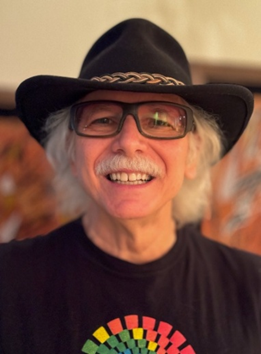
Title: Optics Education: Re-inventing the Lecture
Plenary Speaker
Professor Rick Trebino
Georgia Institute of Technology School of Physics USA
Abstract
The academic lecture was invented in ancient Sumer, using a stylus to inscribe cuneiform on a clay tablet. While it was a good idea then, it hasn’t improved in the 5000 years since then. It has even nearly completely sat out the spectacular ongoing digital revolution, continuing to comprise a stark talking head before a bleak black (or white) board. Worse, lecture preparation is quite time-consuming, and teaching materials, such as lecture notes, are not helpful. So, the tedious task of preparing lectures is currently performed independently—and hence massively redundantly—by every teacher on earth. In other words, the world’s current educational-lecture paradigm is analogous to that of books prior to Gutenberg’s invention of the printing press. As a result, lecture preparation by the world’s 50 million post-primary-school instructors currently absorbs tens of billions of human-hours annually, corresponding to a cost of roughly a trillion dollars a year.
So, it’s time to re-invent the lecture and to do for lectures what Gutenberg did for books. And I’ve done so for two college courses, Modern Physics and Optics. During the pandemic, I created highly polished talking-head-free multimediavideos of all the lectures for the entirety of both courses. And I freely share them with the world, saving students much boredom and stress and lecturers much time—freeing up instructors’ time for more personal interaction with their students.
In short, I believe that this societal transformation is long overdue, and the resulting better educated population would yield additional benefits for the entire world for the foreseeable future.
Biography
Rick Trebino was born in Boston on January 18, 1954. He was quite poor as a child, but, on scholarships, he earned his high-school degree from Phillips Academy in Andover, Massachusetts, his B.A. from Harvard in 1977, and his Ph.D. from Stanford in 1983. Shortly afterward, while at Sandia National Laboratories in Livermore, California, he invented Frequency-Resolved Optical Gating (FROG), the first technique for the complete measurement of an ultrashort laser pulse in time, solving this long-standing famous problem in the field of ultrafast optics and advancing pulse measurement from blurry black-and-white snapshots to high-resolution full-color displays. In 1998, he accepted a Chair at Georgia Tech, where he extended humankind’s measurement capability to the complete spatiotemporal electromagnetic field of even highly complex ultrashort pulses. He currently also develops more advanced approaches to optics and physics education, doing for lectures what Gutenberg did for books. He’s received numerous prestigious awards, including several for his pioneering contributions to optics and physics education, and is a Fellow of four scientific societies. He freely provides his elegant, entertaining, and fully narrated multimedia entire-course video lectures to the world via his web site to encourage the creation of free high-quality video lectures in academia in general.
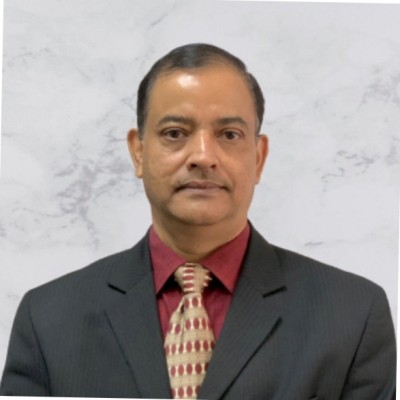
Title: Yield Enhancement of Coconut Shell Biomass-derived Graphene: Role of Microwave Irradiation Power Tuning.
Plenary Speaker
Prof. Sib Krishna Ghoshal
University of Technology Malaysia
Abstract
Production of pure graphene at low cost in a sustainable way for diverse high-performance functional applications remains challenging. Based on this fact, we followed a novel approach (rapid and selective microwave irradiation) to attain an improved yield of graphene-like material derived from the coconut shell biomass waste. The effects of various microwave irradiation (MWI) powers (80, 240, and 400 W) on the crystallinity, morphology, and electrochemical properties of the obtained materials were evaluated and compared with the one made without MWI. The derived graphene-like materials were analyzed thoroughly using different analyticalmethods. The FESEM images of the irradiated specimens showed the nucleation of graphene- like morphologies accompanied by some very thin and transparent sheets. The specimen grown at 80 W revealed most excellent quality with the maximum yield, indicating an enhancement inthe carbon contents, decrease in the oxygen functional groups, and improvement in the BET-specific surface area to the extent of 1238.48 m²/g. The electrochemical characteristics of thespecimen prepared at the optimum MWI power of 80 W displayed rectangular profiles as a function of scanning speeds, demonstrating an ideal capacitive behavior referred to electricdouble-layer capacitance. It is established that the proposed systematic and eco-friendly strategy in preparing these high quality graphene-like materials at economical way may open up varied opportunities for commercial applications, leading towards sustainable growth.
Biography
Sib Krishna Ghoshal (Condensed Matter Physicist) is Professor at Physics Department and Laser Center, Faculty of Science, Universiti Teknologi Malaysia. He received PhD from JNU (Delhi) and was postdoctoral fellow at Brandeis University (USA) and IIT (Delhi) & Oxford University (UK). He published over 650 research articles, 18 book chapters and 7 books with Google Scholar h-index of 46, i10-index of 152 and citations of 7372. He received 58 research grants, two patents on the proposed anticancer drug formulation and plasmon humidity sensor, supervised 28 PhD, 80 MSc & 60 Undergraduate theses. He is recognized as Top 2% of Scientists in their Field Worldwide in 2019 and 2021 by Stanford University (USA) ranking
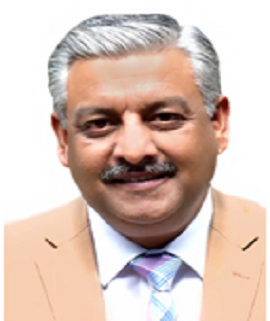
Title: Efficient Optogenetic Control of Neuronal and Cardiac Activity
Keynote Speaker
Prof. Sukhdev Roy
Dayalbagh Educational Institute India
Abstract
Optogenetics has made a strong impact in neuroscience by providing unprecedented spatiotemporal resolution in reading and writing neural codes with relatively lower invasiveness. It also enables all-optical control and recording of cellular activity in living tissue and opens up exciting prospects for optical neural prostheses. Recently, the first successful human trial of optogenetic retinal prostheses and promising results in cardiac optogenetics have been demonstrated. Computational modelling of optogenetic systems has made significant contributions in developing a better understanding of the photocurrent dynamics in opsin molecules and the change in membrane potential in opsin-expressing cells in response to light. Computational models help in quick virtual testing of newly developed light-sensitive proteins in different cell types within realistic tissue and organ-level settings. The talk would focus on our recent research in computational optogenetics for low-power, high-fidelity and high-frequency excitation, inhibition and bidirectional control of different neurons in the brain and cardiomyocytes in the heart, with newly discovered light-sensitive proteins and opsin pairs. The study not only provides a better understanding of the mechanism to efficiently control different cells but also allows optimization of their response. Desensitization of photocurrent is a fundamental problem while using faster opsins. Under sustained illumination, the photocurrent in fast opsins desensitizes with time and results in spike failure below a certain threshold. Recently, we have shown that co-expressing step function opsins with fast channelrhodopsins can overcome this challenge. It has also been shown that ultra-low power deep sustained optogenetic excitation or suppression of electrical activity in human cardiomyocytes can be achieved with the newly discovered ChRmine opsin. The future prospects of optogenetics will also be discussed.
Biography
Professor Sukhdev Roy received the PhD. degree from IIT Delhi in 1993 and subsequently joined the Dayalbagh Educational Institute, India, where he is at present the Head of the Department of Physics and Computer Science. He has been a Visiting Professor at many universities that include, Harvard, Waterloo, Würzburg, Osaka, City University and Queen Mary University of London. He has won a number of awards and has published 175 research papers and 11 book chapters and holds 6 UK design patents on drone technology. He was the Guest Editor of the March 2011 Special Issue of IET Circuits, Devices and Systems Journal (UK) on Optical Computing. He is an Associate Editor of IEEE Access and a Fellow of SPIE, the Indian National Academy of Engineering, the National Academy of Sciences, India, IETE (India), and Distinguished Fellow of the Optical Society of India. He is also listed in the Stanford’s Study of the Top 2% in World Ranking of Scientists in Optoelectronics and Photonics, 2023.

Title: Quantum-dimensional effect in the Case of an Imperfect Array of Nanopores Containing Quantum Dots
Speaker
Prof. Vladimir V. Rumyantsev
A.A. Galkin Donetsk Institute for Physics and Engineering Ukraine
Abstract
Due to the advent of nanotechnology and the expansion of the possibilities of their use, interest in the study of dimensional effects has grown. Since modern optoelectronic devices use various photonics applications, from the harvesting of light by nanophotonic waveguides to quantum information processing, the study of the manifestation of the quantum dimensional effect (QDE) in nanocrystalline photonic systems using thin films and multilayer systems, as well as porous structures and quantum dots, is of particular relevance. QDE is associated with the discretization (quantization) of the energy of the corresponding quasi-particles (for example, polaritons) and/or charge carriers and reflects a change in the thermodynamic and kinetic properties of the crystal, manifested if at least one of its geometric dimensions becomes commensurate with the de Broglie wavelength. In this report, the effect of dimensional quantization of the energy spectrum of a nano object is considered using the example of an imperfect photonic lattice - 1D array of micropores containing quantum dots. A spectrum of quasi-particle (polariton) excitations in a two-sublattice 1D chain of micropores (resonators) with a variable period containing quantum dots of the same grade in one of the sublattices is obtained. As an illustration of the QDE, the dependence of the width of the lowest forbidden energy zone in the polariton spectrum on the magnitude of the distances between the pores and the concentration of structural defects is shown.
Biography
Vladimir V. Rumyantsev is Head of Department of Theory of Complex Systems Dynamic Properties at A.A. Galkin Donetsk Institute for Physics and Engineering (DonIPE). He is Professor of Theoretical Physics and Nanotechnology Department at Donetsk National University (DonNU). He received PhD in Theoretical Physics (1988) from DonNU and Dr. Sci. in Condensed Matter Physics (2007) from DonIPE. Prof. Rumyantsev has authored/co-authored 4 books, 2 chapters in books and more than 370 scientific publications. He is a member of Mediterranean Institute of Fundamental Physics (MIFP, Italy) as well as American Physical Society (USA).

Title: Hermite-Cosh-Gaussian is a promising laser pulse envelope on electron acceleration
Speaker
Prof Jyoti Rajput
Lovely Professional University India
Abstract
A lot of work has been done by employing the Gaussian laser pulse envelope. Researchers were finding a new profile which will be new but not unknown. Hermite-Cosh-Gaussian (HChG) envelope fulfils their demand. We can make such profile by superposition of Hermite-Gaussian (HG) and Cosh-Gaussian (ChG) in laboratory easily. This profile has great importance on electron acceleration in vacuum as well as laser plasma interaction. Two manageable parameters: Hermite order and decentred parameter are connected with this profile to control self-focusing phenomenon. This promising profile has already been tested under different climates like: polarisation radiation, chirping effect, external magnetic field. The HChG profile has been employed for electron acceleration in the vacuum medium and ion channel also. Without any effect electron can easily gain GeV order energy. By employing the combined effect of an external axial magnetic field and linear frequency chirp, an electron enhanced more energy gain than the previous case. Because frequency chirp enhances the interaction time and magnetic field retains the maximum energy for longer duration. The results presented in this study are beneficial for future research, where huge amount of energy is required for various applications such as: cancer treatment, hard X-ray generation etc. Also a comparative study has been done between LP and CP HChG laser pulse beam on electron acceleration. Under the same condition CP HChG beam gives better result than LP HChG beam due to axial symmetry of CP HChG laser beam.
Biography
Jyoti Rajput received her Ph.D. degree from NIT Jalandhar, Punjab, India in 2019. Her research focused areas deal with laser induced electron acceleration in vacuum and plasma (DLA, LBWA, PBWA), harmonic generation and THz radiation. She is M.Phil.- PhD in laser plasma interactions. She has completed her PhD from prestigious Dr. B. R Ambedkar National Institute of Technology Jalandhar. She has published around 40 research articles in various international SCI journals and presented her research work at various international conferences/workshops. She is also a member of different renowned associations/societies e.g., PSSI, ISCA etc. She has been an active reviewer of esteemed international journals like Modern Physics Letters B., waves in random and complex media, Optics Communications, IEEE Trans. in Plasma Science etc. She has delivered many international invited speakers research talks at eminent conferences. At present, she is supervising around 5 PhD research scholars. She has authored 2 international research books and edited 1 international and 5 National books.
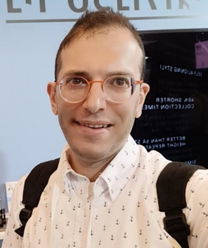
Title: Enhancing Silicon Nitride MMI Couplers for Realizing a Four-Channel O- Band Multiplexer
Keynote Speaker
Dror Malka
Faculty of Engineering Holon, Institute of Technology Isarel
Abstract
In optical communication systems employing wavelength division multiplexing (WDM) technology with silicon (Si) Multimode Interference (MMI) waveguides, mitigating backreflection losses poses a significant challenge. To tackle this issue, we propose an innovativedesign for a 1×4 optical demultiplexer utilizing MMI within a silicon-nitride (SiN) buriedwaveguide configuration, optimized for operation within the C-band spectrum. Throughextensive simulations, our proposed device enables the transmission of 4-channels spaced by 10nm within the C-band, exhibiting minimal power loss in the range of 1.96-2.36 dB, a broadbandwidth spanning 7.68-8.08 nm, and favorable crosstalk levels of 20.8-23.8 dB. Leveragingthe low refractive index of SiN, our design achieves remarkably low back reflection of 41 dB,obviating the need for specialized angled MMI designs typically required in Si MMI technology. Thus, our SiN demultiplexer MMI technology, integrated with AI principles, seamlesslyintegrates within WDM frameworks, offering high data rates alongside minimal back reflectionin optical communication systems. Our results highlight the optimized parameters for dividing four wavelengths of the MMI coupler using SiN buried waveguides, specifically at 1530 nm,1540 nm, 1550 nm, and 1560 nm. These findings underscore the potential of our AI-enabled device to enhance long-distance optical communication networks utilizing WDM technology in the C-band spectrum. Furthermore, we demonstrate the device's low back reflection loss ranging between 40-41 dB without the need for a special angled MMI design, attributed to the use of SiN as the core material. These results suggest promising opportunities for integrating our device into O-band transmitter systems in conjunction with WDM technology, enhancing overall system performance.
Biography
Dror Malka received his BSc and MSc degrees in electrical engineering from the Holon Institute of Technology (HIT) in 2008 and 2010, respectively, Israel. He has also completed a BSc degree in Applied Mathematics at HIT in 2008 and received his Ph.D. degree in electrical engineering from Bar-Ilan University (BIU) in 2015, Israel. Currently, he is a Senior Lecturer in the Faculty of Engineering at HiT. His major fields of research are nanophotonics, super-resolution, AI silicon photonics and fiber optics. He has published around 55 refereed journal papers, and 55conference proceedings papers.

Title: FLAT FIBER BRAGG GRATING TECHNOLOGY FOR MULTIPLE PARAMETER SENSING
Speaker
Dr. Sumiaty AMBRAN
Universiti Teknologi MalaysiaMalaysia
Abstract
A novel planarized optical fiber tailored for comprehensive two-dimensional bend monitoring and external refractive index sensing is presented. The innovative design leverages the integration of two single-mode waveguides, each equipped with a series of spectrally
multiplexed Bragg gratings. To enhance sensitivity to both bending and external refractive index variations, a strategic approach involves partial removal of the cladding material through precise physical machining. This deliberate action serves two critical purposes: first,
it offsets the neutral axis within the fiber, thereby amplifying its bend sensitivity. Second, it exposes the evanescent field of the guided mode, enabling efficient monitoring of external refractive index changes. Through the collective monitoring of the Bragg grating array, this
fiber system facilitates real-time, multiparameter sensing capabilities. This breakthrough empowers intelligent monitoring applications with the ability to detect and analyze various environmental parameters concurrently, opening avenues for advanced sensing and monitoring solutions.
Biography
Sumiaty AMBRAN holds the position of Associate Professor within the Electronic Systems Engineering Department at the Malaysia-Japan International Institute of Technology, Universiti Teknologi Malaysia. She embarked on her academic journey by earning her Bachelor ;s degree in Electronics Telecommunication Engineering from Universiti Teknologi Malaysia in Johor, Malaysia, in 2005. Following her undergraduate studies, she pursued her passion for learning and obtained a Master;s degree from Universiti of MARA in Selangor, Malaysia, in 2008. Determined to advance her expertise in the field of Optoelectronics, Sumiaty went on to complete her Ph.D. at the prestigious Optoelectronics Research Centre (ORC), University of Southampton, United Kingdom, in 2013. Her dedication to her profession is underscored by her certification as a Professional Engineer (PEng) by the Board of Engineers, Malaysia, and her recognition as a Chartered Engineer by the Institution of Engineering and Technology (IET) in the United Kingdom. In her role as a senior lecturer, she actively engages in teaching, research, and consultancy projects. Her contributions to academia extend to a series of published journals and proceedings at both national and international levels. Her research endeavours focus on various facets of optical engineering, including planar integrated optical devices, optical sensors, optical interconnects, rare-earth-doped optical devices, and applications of optical amplifiers. Her dedication to the field of electronic systems engineering and her commitment to knowledge dissemination continue to shape her impressive academic and professional journey.
“ Will be updated soon...”
+91 9491 456 452
7-89-1-18, NVR LAYOUT, Madanapalle, Andhra Pradesh 517325, India
About Us
Global Scientific Guild organizes conferences and webinars to promote quality research and real world impact in an atmosphere of true international co-operation between scientists, doctors, professors, practitioners, engineers and industry by bringing together the world class renowned personalities to discuss the latest developments and innovations at one common platform.